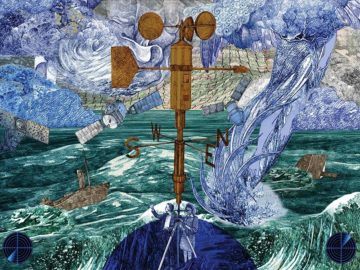Eric Holthaus in Smithsonian:
 For centuries, humans complained about the weather. In 1848, the Smithsonian Institution decided to do something about it. Weather conditions had been considered to be either God’s will or explainable only by homespun nostrums like “Clear moon, frost soon” or by observing, say, the behavior of ants, which don’t like rain. The Farmer’s Almanac promised readers more accurate forecasts when it debuted in 1818, but even those predictions were determined by a “secret formula.” And still are.
For centuries, humans complained about the weather. In 1848, the Smithsonian Institution decided to do something about it. Weather conditions had been considered to be either God’s will or explainable only by homespun nostrums like “Clear moon, frost soon” or by observing, say, the behavior of ants, which don’t like rain. The Farmer’s Almanac promised readers more accurate forecasts when it debuted in 1818, but even those predictions were determined by a “secret formula.” And still are.
Joseph Henry, the first Secretary of the Smithsonian, tried something new: crowdsourcing. The Institution handed out weather monitoring equipment such as thermometers, barometers and rain gauges to 150 volunteer observers across the country. Each day their localized reports arrived by telegraph, and the Smithsonian generated a national weather map that it displayed on the National Mall. The map became a popular attraction. Tourists who viewed it, Henry noted, “appear to be specially interested in knowing the condition of weather to which their friends at home are subjected at the time.”
More here.
